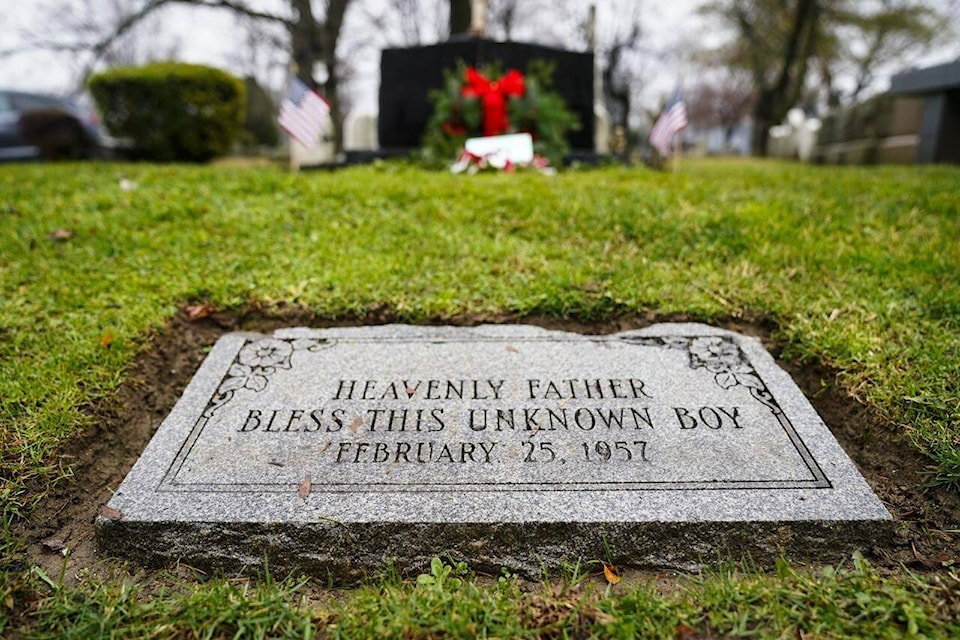His name was Joseph Augustus Zarelli.
Nearly 66 years after the battered body of a young boy was found stuffed inside a cardboard box, Philadelphia police say they have finally unlocked a central mystery in the city’s most notorious cold case: The victim’s identity.
Revealing it to the public Thursday, authorities hope it will bring them a step closer to the boy’s killer and give the victim — known to generations of Philadelphians as the “Boy in the Box” — a small measure of dignity.
The city’s oldest unsolved homicide has “haunted this community, the Philadelphia police department, our nation, and the world,” Philadelphia Police Commissioner Danielle Outlaw said at a news conference.
“When people think about the boy in the box, a profound sadness his felt, not just because a child was murdered, but because his entire identity and his rightful claim to own his existence was taken away,” she said.
Police say detective work and DNA analysis helped them finally learn Joseph’s name. The homicide investigation remains open, and authorities said they hoped releasing Joseph’s name would spur a fresh round of leads.
Police said both of Joseph’s parents are dead, but he has living relatives.
The child’s naked, badly bruised body was found on Feb. 25, 1957, in a wooded area of Philadelphia’s Fox Chase neighborhood. The boy, who was 4 years old, had been wrapped in a blanket and placed inside a large JCPenney bassinet box. Police say he was malnourished. He’d been beaten to death.
The boy’s photo was put on a poster and plastered all over the city as police worked to identify him and catch his killer.
Detectives pursued and discarded hundreds of leads — that he was a Hungarian refugee, a boy who’d been kidnapped outside a Long Island supermarket in 1955, a variety of other missing children. They investigated a pair of traveling carnival workers and a family who operated a nearby foster home, but ruled them out as suspects.
An Ohio woman claimed her mother bought the boy from his birth parents in 1954, kept him in the basement of their suburban Philadelphia home, and killed him in a fit of rage. Authorities found her credible but couldn’t corroborate her story — another dead end.
All the while, the boy’s missing identity gnawed at police officials, generations of whom took up the case.
Originally buried in a pauper’s grave, the boy’s remains now lie just inside the front gate at Ivy Hill Cemetery, under a weeping cherry tree, and a headstone designates him as “America’s Unknown Child.” Services have been held there each year on the anniversary of the boy’s discovery inside the box.
People often leave flowers and, this time of year, Christmas decorations and toys.
“The boy has always been special to all of us, because we don’t know who it is,” Dave Drysdale, the cemetery’s secretary-treasurer, said in a phone interview ahead of the news conference.
Now they do. And now that he has a name — his real name — it will be etched on the stone, Drysdale said.
—Michael Rubinkam, The Associated Press
RELATED: B.C. RCMP hope to crack cold case of ‘senseless’ break-and-enter turned murder
RELATED: Cold case team shines new light on betrayal of Anne Frank
